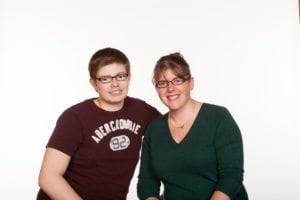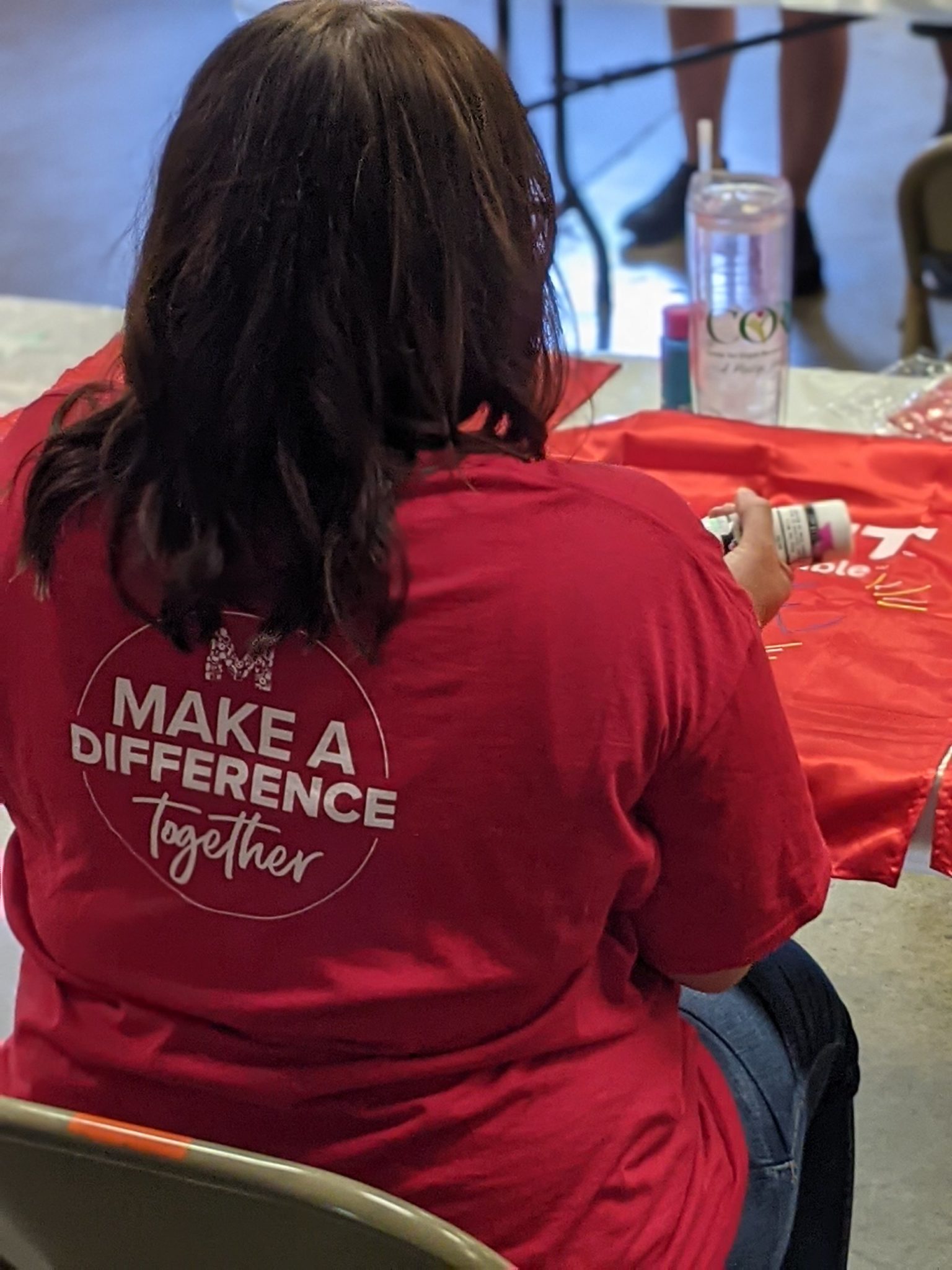2017 Miracle Kid Wayne Boone

Wayne Boone of Julian, Pa., is a very determined young man. The 15-year-old Bald Eagle High School student maintains good grades, with A’s in his science and math courses, and participates in extracurricular activities at the school.
He is involved in the school marching band, serving as a manager for the color guard and participates regularly in the school’s drama program. Wayne also studies medical science and technology at the Central Pennsylvania Institute of Science and Technology in Pleasant Gap. He hopes to become a registered nurse or a physician’s assistant.
But things weren’t always so bright for Wayne. He was overweight, was bullied in school and lacked self-esteem.
His mother and grandfather noticed that he was eating a lot, sometimes eating two or three plates of food.
“At my dad’s where he stays, they have more than 30 steps,” his mother Amanda Young said. “He couldn’t walk up the first set of steps without huffing and puffing. That is when Wayne noticed that there was a problem. He came to my dad and I and said that something needed to be done, because he didn’t feel good half the time. He was eating an awful lot.”
Wayne also had complained a few times about being shaky and sometimes during gym class, he said he was seeing black dots in his vision. His mother was concerned that it might be the start of diabetes, which runs in the family.
They made an appointment to see Wayne’s primary care physician, Stacey Blazina, DO, at Geisinger Gray’s Woods, who heard the family’s concerns and recommended that Wayne see Deanna Martin, a pediatric physician assistant who oversees Geisinger’s Weigh of Life program at Gray’s Woods.
The program is family-based and includes education and behavioral modification. It consists of 16 sessions where the patient sees a nurse practitioner, a physician’s assistant, a dietitian and a physical therapist. The goal is to promote healthy lifestyles related to nutrition, physical activity and family life.
“In terms of family life, what is extremely important is that the parents act as role models for the kids. We want the parents to lead healthy lifestyles,” says William Cochran, MD, the pediatric gastroenterologist who brought the weight management program to Geisinger in 1987. “Even though the parent might not be our patient, we have a number of parents who were doing the things we were asking of the children and they end up losing weight. That is a definite positive as well.”
Martin ran some preliminary blood work to see what Wayne’s overall health looked like. She found his blood pressure was very high, his body mass index (BMI) was in the 98th percentile with a weight of 181 pounds, and his cholesterol was 220.
“Typically for a child, we are looking for a cholesterol number less than 170,” Martin said. “His insulin was a little elevated but it hadn’t gotten really out of whack yet. This is what would lead him to become a Type 2 diabetic, as he became insulin resistant.”
Martin told Wayne he needed to start watching what he was eating and change his diet, to help lessen his blood pressure or he may end up having some major health issues.
There are no medications involved with the Weigh of Life program. It focuses on behavioral changes. Patients are asked to write down everything they eat and to increase their exercise. Martin or a dietitian then examines the patient’s information for trends.

“It involves looking at patterns or a patient’s responses to eating and what causes them to eat more,” Martin said. “We look to see if there is a certain time the patient is more likely to eat, such as when they are feeling sad or stressed. Do they eat more when they are alone or when they are with family? We also look to increase the patient’s exercise.”
In the Weigh of Life program, patients come in every six weeks to be weighed and to review their eating and exercise behaviors. When the patient comes in to get reweighed, the caregivers focus on another way that the patient can increase his or her activity, identify positive changes and find out if there are any negative things he or she is struggling with. It is a step-by-step process.
Martin has about 15 patients involved in the program at Geisinger Gray’s Woods, which is only in its second year. The program in Danville has hundreds of pediatric participants each year.
Patients and their caregivers set achievable goals to help promote success in the program. When Wayne started in July of 2014, he was not able to walk up a flight of steps without taking a break and he wanted to try to do the mile run in gym class in less than 20 minutes.
“In gym class, twice a year, we run a mile run around the track,” Wayne said. “I couldn’t even make it from the start line to the benches where the football players sit. I would have to stop because I would be heavily breathing and need to stop and walk. My mile time was always 30 minutes, which brought my grade down.”
Wayne was eating big portions at meals and needed to really watch what and how much he was eating.
“Deanna said one of those things that we needed to help him with was lowering his portions of food,” Amanda said. “She explained that if he was still hungry after a meal that we encourage him to eat healthier snacks like fruits or vegetables, instead of loading up on extra potatoes and noodles.”
“Those are all high in carbohydrates, which can make you fat because they are all starchy foods,” Wayne said. “It took about a month to get my portions down. When I first started, I was having two big scoops of mashed potatoes. I lowered it to one, to a half, then to a quarter. Now, I don’t eat mashed potatoes too much anymore.”
Wayne began changing his diet, increasing his exercise and paying attention not only to everything he was eating but also to what he was drinking.
“He used to drink a lot of juice and soda,” Amanda said. “Now he drinks mostly water.”
“I drink nothing but water and milk in school,” Wayne said. “In school, water costs more than other drinks.”
“Twenty percent of kids are overweight because they drink too many calories,” Dr. Cochran said.
Wayne also limited the amount of time he spent sitting in front of the television, which is something else Dr. Cochran emphasizes.
“Media is very important, and everyone is inundated with media now,” he said. “We use a rubric: 5-2-1-0. Which means try to consume five servings of fruits and vegetables a day. No more than two hours of screen time a day. Try to get in one hour of physical activity and no sweet beverages.”
Now, two years into the program, Wayne has seen amazing results. His peak weight was 181.6 pounds and now he is near 160 pounds.
“This may not sound like a huge amount, but the weight loss has brought his BMI down from the 98.5 percentile to a nearly normal BMI of 85.6 percent,” Martin said. “For the average kid, we look for a BMI of 85 percent or lower. He has gone from being morbidly obese to a healthy weight. Once he reaches 85 percent, he will graduate from the program.”
Wayne has noticed the results and is reaping the benefits of his new-found health.
“My blood pressure went from through the roof down to 120/80, which is normal. My cholesterol is down to 145,” he said. “I feel great now. I brought my mile run time down from 20 to 30 minutes to 10 to 15 minutes. I never come in at 15 anymore – it is always better.
“And I can run up and down the steps, 3 or 4 times now before I stop,” he adds.
Martin and Dr. Blazina see a world of difference as well.
“Wayne was so motivated. He bit the bullet and worked hard. He worked out at the gym and when I say worked out, I mean he was sweating,” Martin said. “He was bound and determined that he was going to make a difference, and he did. His confidence has just completely soared. In drama, he has really come into his own because he is not hiding behind this fat kid any more. He is actually healthy.”
“It has given him self-esteem to participate in extracurricular activities such as marching band and drama,” Dr. Blazina said. “He mentioned at his last well visit that he wants to be a nurse. Maybe his experience with his health and weight loss will play a role with his desire to pursue this career in the future.”
Dr. Cochran said that hundreds of kids enroll in the program each year, with some pretty good success. Several kids have lost more than 100 pounds, without the use of bariatric surgery. “For a number of these kids, it has dramatically changed their lives,” he said. “Some of these kids come in feeling very depressed — hopeless. Maybe they have tried to do something before and have not been successful. We don’t want this to be another thing in life where they are not successful.” For Wayne, the program has definitely changed his life.
“I could have done it myself, but it took someone to tell me to get it in gear,” he said. “Deanna showed me what would happen if I didn’t.”
His mother couldn’t agree more.
“The Geisinger doctors have been really great. When we go there, they focus on Wayne, which is what I prefer,” Amanda said. “I think him seeing his progress on a computer screen really helped, because he could see his progress and realized that he was doing something for himself.”
Children’s Miracle Network at Geisinger helps to supply many pieces of health-related equipment at Geisinger Gray’s Wood, where Wayne is followed for care and the Weigh of Life program.





